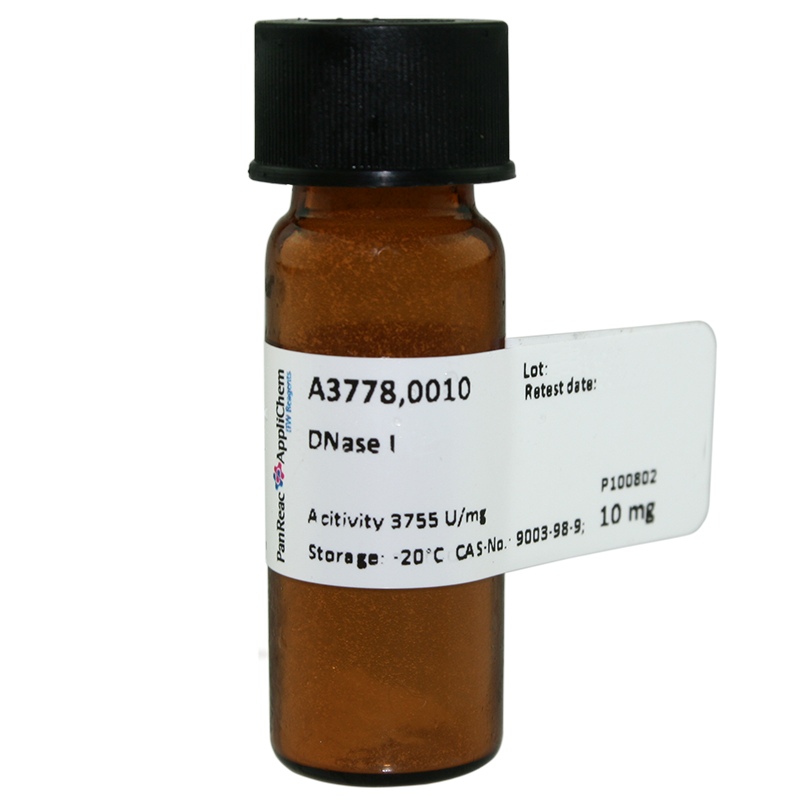Packs sizes (4)
| code | packaging size | price per unit | box price per unit | |
|---|---|---|---|---|
| Code & packaging | Price per piece | |||

|
code
A3778,0010
|
packaging size
10 mg
|
price per unit
single
27,90€
|
box price per unit
|

|
code
A3778,0050
|
packaging size
50 mg
|
price per unit
single
55,10€
|
box price per unit
|

|
code
A3778,0100
|
packaging size
100 mg
|
price per unit
single
92,40€
|
box price per unit
|

|
code
A3778,0500
|
packaging size
500 mg
|
price per unit
single
381,60€
|
box price per unit
|
Technical data
- Physical Description:
- Solid
- Product Code:
- A3778
- Product Name:
- DNase I
- Short Description:
- delivery form: salt-free, freeze-dried powder, chromatographically prepared
- Specifications:
- Activity (Kunitz): min. 3000 U/mg
- WGK:
- 1
- Storage:
- -20°C
- Origin:
- from bovine pancreas
- EINECS:
- 232-667-0
- CS:
- 35079090







